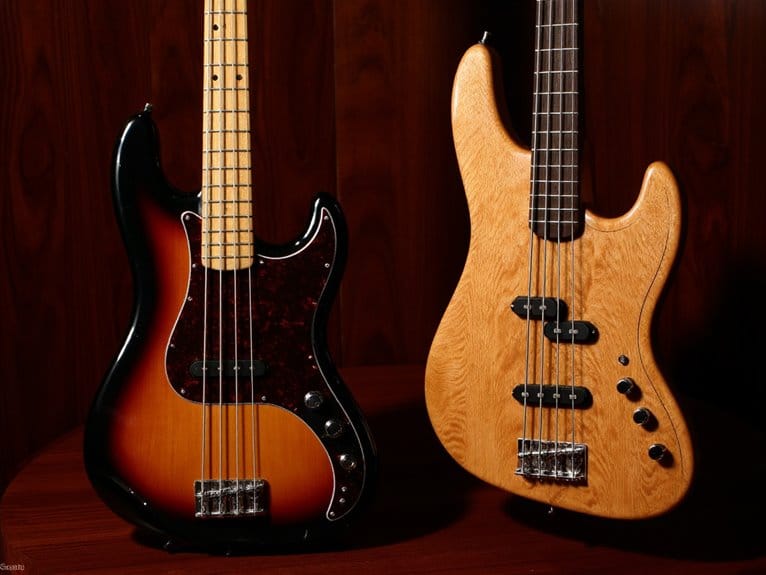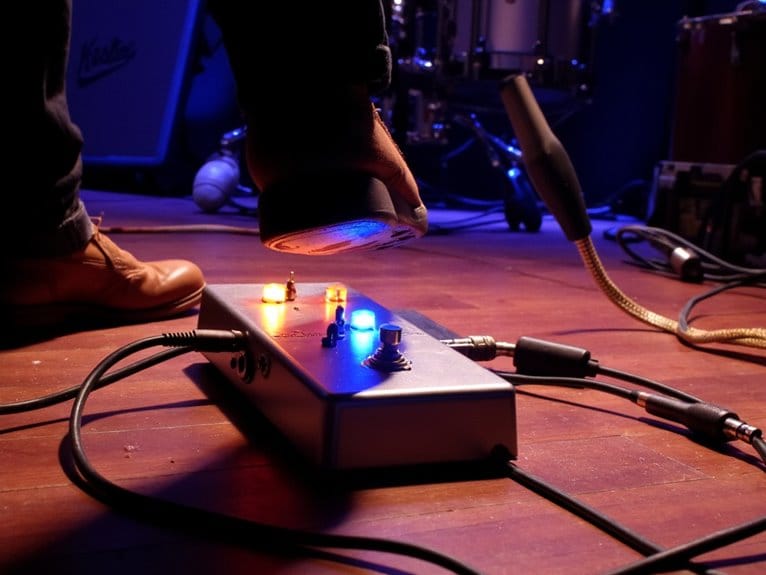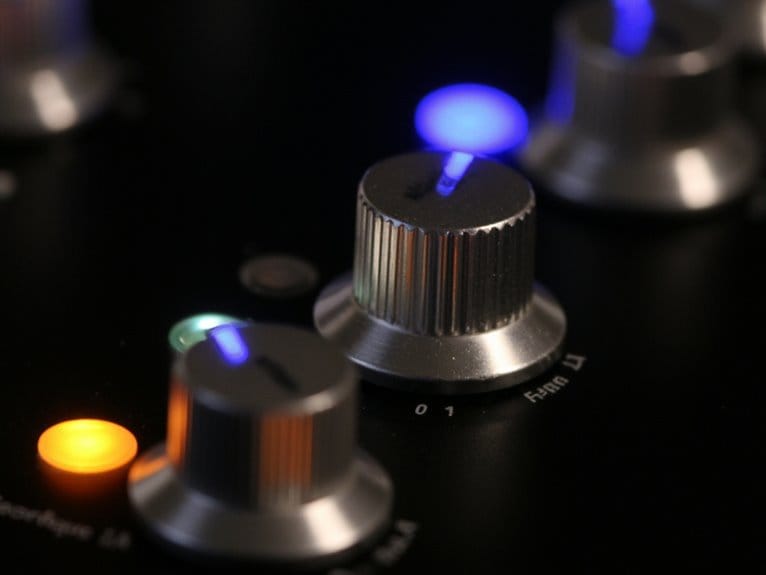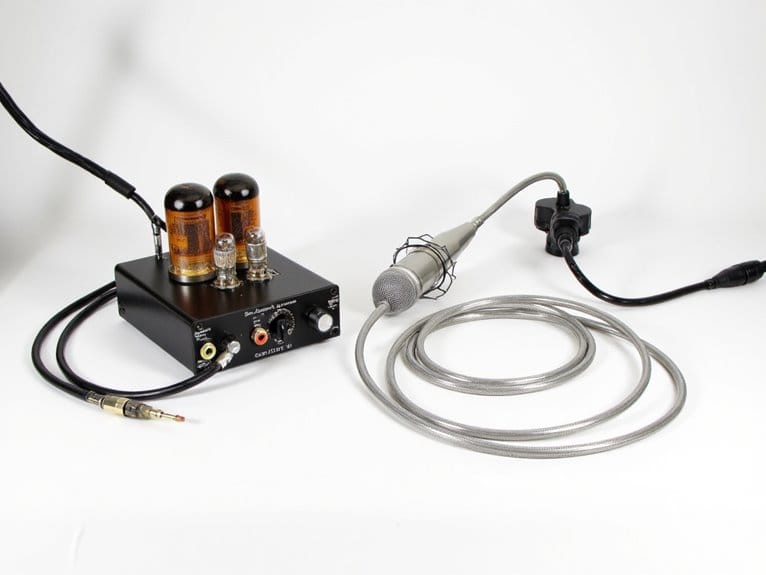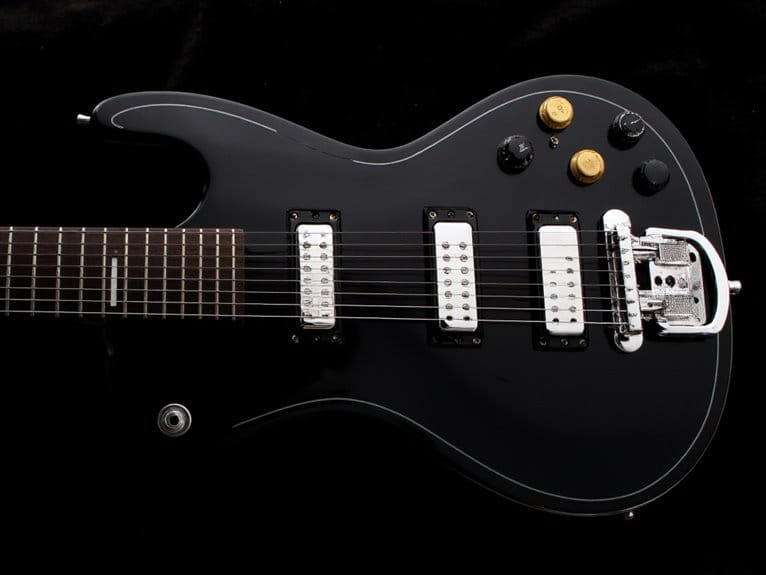Fender Precision & Jazz Bass: The Foundation of Modern Bass Sound
When you pick up a Fender Precision or Jazz Bass, you’re holding instruments that defined modern music’s low-end foundation since 1951. The P-Bass’s solid body design eliminated feedback while its 34-inch scale became industry standard, anchoring Motown grooves through James Jamerson’s legendary work. Meanwhile, the Jazz Bass’s dual-pickup versatility enabled Jaco Pastorius to transform bass into a lead voice, while Larry Graham invented slap techniques that revolutionized funk. These designs continue shaping everything from hip-hop to metal, and there’s much more to discover about their enduring impact.
We are supported by our audience. When you purchase through links on our site, we may earn an affiliate commission, at no extra cost for you. Learn more.
Notable Insights
- The Precision Bass introduced in 1951 pioneered the electric bass revolution with its solid body design eliminating feedback issues.
- Fender established the 34-inch scale length and ergonomic features that became the industry standard for all electric bass instruments.
- Legendary artists like James Jamerson, Jaco Pastorius, and Larry Graham used these basses to define entire musical genres and techniques.
- The Jazz Bass’s dual-pickup configuration provided versatile tonal options that revolutionized funk, soul, and contemporary bass playing styles.
- Both models became recording studio staples due to their exceptional clarity and continue influencing modern music across all genres.
Revolutionary Design Features That Changed Bass Playing Forever
When Leo Fender introduced the Precision Bass in 1951, he wasn’t just creating another instrument—he was engineering a sonic revolution that would fundamentally reshape how one thinks about bass playing.
The solid body innovation eliminated feedback issues that plagued hollow instruments, allowing you to perform confidently in amplified settings. Fender’s choice of alder and ash woods delivered balanced tone with exceptional warmth and sustain, while the 34-inch scale length established what became the industry standard.
The ergonomic enhancements, including body contouring adapted from the Stratocaster and strategic forearm cuts, transformed how comfortable extended performances could be. The 4-saddle bridge configuration provided superior stability and precise intonation adjustments that remain essential to professional bass performance today.
By the mid-1950s, the Precision Bass became indispensable in smaller, louder bands as it filled the gap left by upright basses becoming impractical in amplified environments. The C-shaped neck profile reduced hand fatigue during extended playing sessions, making the instrument accessible to a broader range of musicians. Professional recording studios quickly adopted these instruments for their exceptional clarity when connected through quality audio interfaces that could capture the full dynamic range of electric bass frequencies. As the demand for versatility grew, many musicians began exploring short scale basses, which offered a unique tonal quality and playability. These instruments became an attractive option for players seeking a more compact alternative that could still produce rich sounds suitable for various genres. This trend further diversified the bass landscape, allowing players to experiment with different styles and techniques.
These design elements didn’t just improve playability—they created the foundation for modern electric bass as it’s understood today.
Iconic Artists Who Defined Generations With Precision and Jazz Bass Sounds
While Leo Fender’s engineering genius laid the foundation, it’s the legendary musicians who picked up these instruments that truly transformed them into cultural icons. Their distinctive playing styles and sonic signatures became the soundtrack to multiple generations.
Legendary musicians transformed Fender’s engineering innovations into cultural icons, their distinctive styles becoming the soundtrack to generations.
The Precision Legacy found its voice through pioneers like James Jamerson, whose Motown grooves defined an era. Meanwhile, Roger Waters crafted Pink Floyd’s hypnotic basslines that shaped progressive rock’s sonic landscape. Bill Black’s early rock & roll work with Elvis demonstrated the instrument’s revolutionary potential. Suzi Quatro helped establish the Precision Bass as the session player’s choice when she claimed it was the only bass that worked directly into the board for studio recording.
Jazz Innovations reached their peak through transformative artists:
- Jaco Pastorius revolutionized electric bass as a lead voice, expanding expressive possibilities beyond traditional rhythm sections.
- John Paul Jones anchored Led Zeppelin’s foundational grooves with his 1962 Jazz Bass through 1975.
- Larry Graham invented slap bass technique, creating funk’s rhythmic foundation.
- Flea modernized the sound, blending punk energy with funky melodicism for contemporary audiences.
The Jazz Bass became particularly renowned for its punchy tone, making it exceptionally versatile across soul, funk, and other demanding genres. Many musicians have embraced the Jazz Bass for its ability to cut through mixes while retaining warmth and depth. Additionally, pairing it with a compression pedal for bass further enhances its dynamic range, allowing players to achieve a polished and balanced sound. This combination has made it a favorite among both studio and live performers, solidifying its place in music history.
From 1951 to Today: How These Legendary Instruments Continue Shaping Music
Since Leo Fender first introduced the Precision Bass in 1951, these two legendary instruments haven’t just survived the test of time—they’ve actively shaped every decade of popular music that followed, becoming the sonic backbone for genres that didn’t even exist when they were created.
You’ll find these bass innovations everywhere, from the thick, punchy P-Bass tone that anchored Motown’s rhythm section to the Jazz Bass‘s versatile dual-pickup configuration that enabled funk’s slap-and-pop revolution.
Their sonic evolution continues today through modern iterations like the American Ultra and Player series, which preserve the original split-coil and dual single-coil designs while incorporating contemporary refinements. The Squier sub-brand has also expanded accessibility since 1982, offering budget-friendly versions that maintain the essential character of these legendary instruments.
The original double-cutaway slab body design of 1951 featured a distinctly angular ash construction that would later evolve into the contoured bodies we recognize today. What’s remarkable is how these 1950s-1960s designs remain relevant across hip-hop, metal, and electronic music, proving that foundational engineering excellence transcends generational boundaries and technological advances.
On a final note
You’ve witnessed how these two instruments revolutionized bass playing, from James Jamerson’s precise Motown grooves to Jaco Pastorius’s jazz fusion innovations. Whether you’re drawn to the Precision’s punchy fundamentals or the Jazz’s versatile clarity, you can’t go wrong with either choice. I’ve seen countless players discover their signature sound through these designs, and frankly, they’ll continue shaping music for generations. Your journey starts with understanding what countless legends already knew.

